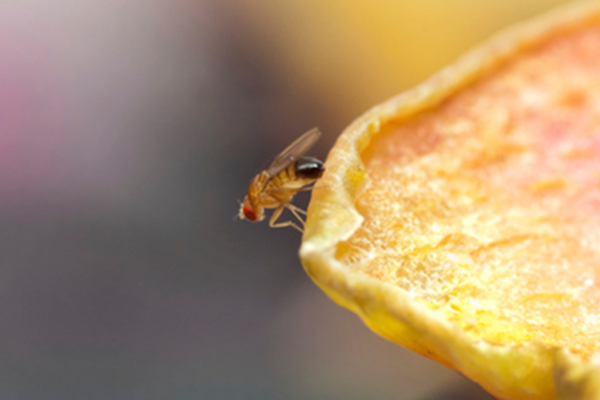
Showing 34 types of FLIES
Latin Name: Aedes albopictus
This species is native to Asia but was introduced into Hawaii in the late 1900’s and was found in the continental U.S. in Texas in 1985. It now is found in at least 26 states and as far north as Minnesota and Pennsylvania, south to Florida, and west to West Texas. It also is now found in South America, Mexico, and the Caribbean, in Africa and Europe, and in Australia and several major islands of the South Pacific. It’s spread has been tied in some cases to the movement of automobile tires and the larvae living in water in these tires.
Latin Name: Phormia regina
The true origin is unknown, as these flies are found throughout the world.
Latin Name: Simuliidae
At least 255 species of these native insects occur in North America.
Latin Name: Sepsidae
Three or more dozen species of these native flies are found in North America.
Native to North America, and a member of a large family of flies that otherwise are not of any pest significance.
Latin Name: Calliphora vicina
The true origin is unknown, as these flies are found throughout the world.
European or Asian in origin, but now found throughout the world.
Possibly native to North America, and found throughout the United States, Canada, and in Europe.
Latin Name: Drosophila repleta
There are 91 species in what is called the Drosophila repleta “group” in North and South America and they are native to this Hemisphere. Given the sudden and recent appearance of these flies in North America they may be native to Central and South America.
Many species of these tiny flies are native to North America.
A number of species are native to North America.
Latin Name: Ophyra leucostoma
Possibly a native in North America but now found nearly worldwide. In North America they are found in Canada and throughout the U.S., south into Central America.
Latin Name: Tipula paludosa
This is a native of Europe that found its way into the Pacific Northwest around 1955. It now is established in Washington, some of northwestern Oregon, and into British Columbia, with a possible presence in northern California.
Latin Name: Hippelates sp.
These are native flies in North America and are common throughout the continent.
A native of Europe and Asia, this fly is now found throughout North America as well.
Many species native to North America.
Latin Name: Oscinella frit
These may be native insects in North America and they are found in southern Canada, nearly all of the U.S., and south into Mexico. They also may be found in Europe.
Latin Name: Drosophila melanogaster
Many species of these flies occur throughout the world. The species Drosophila melanogaster is one of the most common in structures, and is used extensively in laboratory studies of genetic characteristics.
Several species that are native to North America, and widely spread throughout the continent and into Latin America.
A number of native species occur in North America, particularly in the more humid states where the moist conditions the larvae need are available year-round.
This species is found abundantly throughout the world, and in many countries, where sanitation is not adequate and human wastes are commonly deposited outdoors, the House Fly is responsible for the spread of numerous serious diseases. Included in this list are dysentery, typhoid, cholera, poliomyelitis, yaws, anthrax, tularemia, intestinal parasites and eye parasites. It is incriminated in the spread of food infections from bacteria such as Shigella and Salmonella.
Latin Name: Fannia scalaris
Likely European in origin this species now occurs throughout the world.
Latin Name: Agromyzidae
Native to Europe but now found worldwide in greenhouses where mums and other related flowers are grown.
A number of native species of these flies are found in North America.
Probably native to North America, but found in many other countries as well.
Approximately 16 species in North America, most considered native to the continent.
These are native insects in North America.
A number of native species of flies in this family occur throughout North America.
These flies, including the common species found in the United States, may be found throughout the world.
This species is found throughout North America and Europe.
Latin Name: Aedes aegypti
This species is found throughout the world in tropical regions, its true origin not well known.